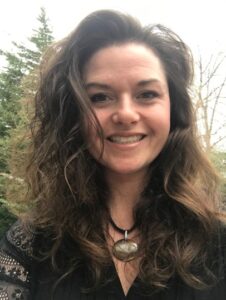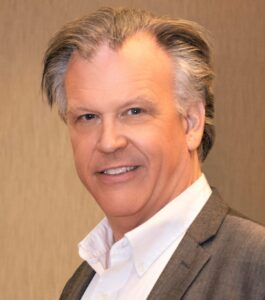By Veronica Gonzales, Deputy Director of the STEM Learning Ecosystems Community of Practice
and Alyssa Briggs, Director of the STEM Learning Ecosystems Community of Practice
When we shared some personal reflections about our own experiences as STEM outsiders, we were hoping that it might prompt others to also share their stories.
It did.
Over the last week, we’ve heard from many of you who told us about how your STEM hopes were nearly dashed by everything from a lack of appropriate role models to insensitive comments or actions by adults.
While some of you just wanted to keep your comments between us, a few of you decided that you were ready to share publicly in the hope that the more we talk about the barriers to STEM, the better our chances are of knocking them down.
Thank you for such a tremendous response.
We have included a few stories that we received.
As build we build our Community of Practice, we will continue to share stories. We encourage you to send your story to us today at info@stemecosystems.org
“What happens in Vegas may stay in Vegas, but what happens in New Orleans, goes home with you.”
- Laurell Hamilton, author.
We’re seeking to prove Laurell Hamilton right!
We believe that the New Orleans convening is going to offer rich learning opportunities that will have practical value for you and your ecosystems.
Please don’t forget to download the convening APP here so that you can begin planning which breakout sessions to attend. The App will give you a great overview of what to expect.
We have also added a number of new Family Engagement resources to our growing literature review, accessed here.
But we can’t resist talking about a few special events. (You already knew that Walter Isaacson will be delivering our keynote address on Thursday, April 4. But he’s not the only New York Times best seller to be joining us!) Paul Reynolds of FableVision, the noted illustrator, author and creator of International Dot Day, will also be leading an interactive workshop during our reception the first night and speaking at the conclusion of the convening.
Safe travels everyone.
And now for our stories…
By Erica DeMichele, Co-Lead of Delran STEM Ecosystem Alliance
“Erica Can’t Read”
As a Mom and teacher to two little girls, ages 6 and 8, I can’t always separate “Mom-ing” and teaching. Every moment I can, I make a real world connection. We talk openly and honestly about their amazing questions. We work through the question with more questions. We play by building towers of Magnatiles and Legos. Last night, a Playmobil character was swinging down a zip line into the living room, imagineered by my daughters who were inspired by the activity we will do while we are on vacation this Spring Break.
Recently, my oldest daughter, now in second grade, was very discouraged by a friend at school who told her that her handwriting was terrible. He said that everyone could recognize her writing because it was so messy. That night, she came home, sad at the negative comment, and begged me to take her to Lakeshore Learning. She wanted to pick out a workbook to help her get better at handwriting. Of course, I said “yes”. But the experience brought me back to my own 8 year old self…
It was second grade, and we were at a Family Fun Art Night. My pig tails were cute and a newspaper photographer was there to capture the event. He took a photograph of me through an open heart T-shirt stencil that I had just made. (The photograph even made the front page of the news the next day.) Life couldn’t have been any better for that fraction of a second.
Then, Danielle, one of my best friends in my very small world, saw me with my parents. She came right up to my Mom and Dad and told them, “Erica can’t read!”
Considering both of my parents were college educated, and my Mother a seasoned middle school teacher, the end of fun came to an abrupt halt. Afterwards, my parents debated, demonstrating stress and concern over this issue. Did I have a learning problem? Was I illiterate? Did I need to be held back? I remember feeling inadequate and embarrassed. I knew that I would be spending a lot more time working on my phonics that summer.
Of course, no Individualized Education Plan was set up for me. I was just a late bloomer. As I continued into third and fourth grade, my reading proficiency took off. My teachers and my parents encouraged reading. Nancy Drew and the Hardy Boys became beloved favorites. Judy Bloom was like a rock star to me. Shel Silverstein made me believe in unicorns and giants. Years later, I still double fist books. My friends joke that I can remember every character from the novels A Song of Fire and Ice and The Lord of the Rings. If they need a refresher on how the movies and the novels intersect, they come to me.
I overcame the embarrassment of being an inadequate reader in second grade. From that experience, the teacher in me believes that there is a lesson in that failure. So, I remind my daughters that someone once told me that I couldn’t read. That puts a smile on their faces, because they know that her Mom is pretty good at figuring out most anything. If I struggled to read when I was young, but love to read now, then it doesn’t mean that failure is forever. When they struggle, it’s OK. We work through a problem by working differently, questioning our thinking, and trying new ways to learn.
In this life, I am determined to inspire the power of YET in every single child. I want all kids to have the internal mantra, “I can’t do it YET.” Through those trials and tribulations of life, perhaps failing is more important than succeeding, because YET is the motivation to keep trying and believing.
Erica DeMichele (Delran STEM Ecosystem Alliance)
Delran STEM Ecosystem Co-Lead and Delran Township Schools K-12 Supervisor of Science, Engineeri

ng, Technology, Sustainability and STEM Programming at Delran Township Public Schools
856-461-6100 x3034
http://www.delranschools.org/s_t_e_m
@DeMicheleErica
@DelranSTEM
Erica has been an educator in NJ for 21 years, educating both urban and suburban communities in South Jersey in the areas of biology, environmental science and forensics. As a K-12 Supervisor in Delran, she has had the pleasure of creating new programming to build culture and enhance in and out of school time programs in the area of STEM. As Co-lead for the Delran STEM Ecosystem Alliance, with Mary Jo Hutchinson, family engagement has been implemented in the Delran Innovation & Fabrication Lab, Delran Cubs STEAM Up Camp, Sustainability and STEM Fair initiatives. She was named the Sustainable Jersey for Schools April 2017 Hero.
By Phil Hampton, Lead of Ventura County STEM Network
“You didn’t score high enough to be placed in advanced math because you didn’t finish all of the problems, but your accuracy on the problems you completed was high. I want to offer you the opportunity take the advanced math track in high school.”
That opportunity and encouragement by my middle school math teacher changed my life path. I had taken advanced math classes in middle school along with other “calculator kids,” as my fellow classmates called us. My life would have had a completely different trajectory if I had not continued in advanced math classes through high school. All our students, especially our underserved students, deserve opportunities and encouragement to take advanced math. Far too often, however, research shows that low-income, African-American and Hispanic students are encouraged to take lower-level math classes.
Saying that the track at my high school was “advanced math” is a bit of a misnomer—the track took its students through geometry in your sophomore year, advanced algebra/ pre-calculus in the junior year, and precalculus/ Calculus I material in their senior year. All students should have the opportunity to take that track of courses, not just “calculator kids”.
When I speak to middle and high school students about Navigating a STEM Future, I encourage them to take four years of science and four years of math in high school and to get as far in math as they possibly can, ideally through calculus but at least through pre-calculus. California graduation requirements only mandate two years of science and three years of math for graduation with no math being required during the senior year of high school. Achieving the minimum high school preparation in STEM required for graduation not only does not meet the admission requirements for attending a University of California (UC) or California State University (CSU) campus, it also does not prepare students for would effectively shut students for studying STEM in college. Only 33% of Latinx students in our county graduate meeting the UC/CSU admission requirements compared with 59% of White students.
Instead of encouraging our underserved students to take lower math, let’s encourage them to stretch themselves by taking advanced math and change the message to, “Sí se puede! Yes, you can!”
Phil Hampton

Director, VC STEM Network, California State University Channel Islands
Ventura County STEM Network
“Science is a verb, you do science”, says Dr. Phil Hampton, Director of the Ventura County STEM (VC STEM) network and Interim Director of Educational Partnerships at California State University Channel Islands (CI).” Hampton lives this philosophy by bringing hands-on STEM to the Ventura County community through STEM outreach, grant funded programming, and the annual Science Carnival. He started his academic career as a faculty member at the University of New Mexico after securing his Ph.D. from Stanford University and completing postdoctoral work at Caltech. In 2001, he joined CI as a founding faculty member supporting the launch of CI that opened in 2002. CI serves as the primary lead of VC STEM. Bringing science to the community is one of Dr. Hampton’s greatest passions. He organizes the annual Science Carnival each Fall where over 2000 PK-8 grade students and their parents can engage in 100 hands-on STEM activities.
